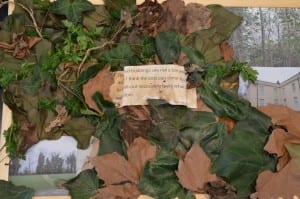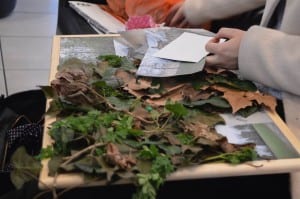Last week my group and I thought it would be useful to visit the Lincolnshire Archive centre to help with inspiration for our monologues. We were given a catalogue which contained sections of the letters that the Beechey brothers had written, and we paid particular attention to how the letters were signed off. Each brother signed their letters in a different way, for example, Barnard Reeve Beechey ended many of his in ‘I am your loving son, Bar.’ We want to incorporate the idea of ‘leaving’ or ‘saying goodbye’ into our piece to symbolise the effect that the war had on people in 1915. From the monologues that we have written so far, each discusses the idea of having to say goodbye to a loved one. Amy Beechey‘s monologue talks about what it was like from a mothers perspective when she had to send her children to war. Florence Bonnetts monologue talks about her finance and how it felt to be separated from him, and finally our teacher character talks about having to resign from her duties as teacher, leaving behind her pupils. In our piece we have different points on the journey were we have interactions with the audience, however, after these interactions the actor will send the audience member on their way, using a simple hand gesture of ‘waving goodbye’. We are still unsure if this gesture is enough to indicate our theme throughout, and this will only become apparent when we start rehearsing it in our site.
We also walked through our site last week, and this sparked new ideas. Florence Bonnett’s monologue talks about working in the William Foster factory with her friends, making the tracks for the tanks. Our original idea was to have the audience member making daisy chains to show the idea of linking things together to produce something. We then realised that this had its issues. Florence Bonnett was 15 years old when she worked in the factory, and making daisy chains is something you tend to do at a much younger age. It also sparked questions like ‘would the audience members actually get involved in making the daisy chains?’ We have now decided to use Foam gliders, which are plane templates that you can piece together in order to build a paper plane. We are thinking of photographing the audience member with our mobile phones as they make the plane to document the process. By using modern technology we are bringing it into the ‘now’ by documenting the past with the present. We are also thinking of having the audience member fly the paper aeroplane down the steep hill, measuring how far it goes. Again, all of this links with the recording of our piece and the idea of Florence working with her friends to build something.
As we walked a little further up the steep hill, we came across an information board near to the cathedral. It displayed information about Lincolnshire in 1915 and how the Ruston Proctor factory was producing the most amount of aircraft during the WW1. This also links into our war theme and makes our idea of building the paper planes more significant. We are still yet to try out this new idea in our site, but I feel it makes a lot more sense then making daisy chains.
Hannah Taylor

